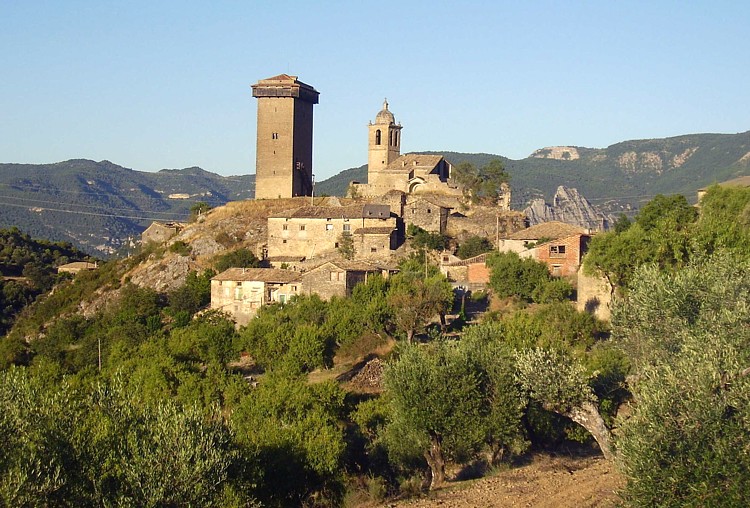High in the Aragonese Pyrenees lies the small village of Abizanda, home of an impressive 11th century Lombard tower, a 16th century church, a puppet theatre, a museum of Pyrenean religious relics and curiosities (earmarked for a visit!), and a most intriguing ritual that comes about on Winter’s wane.
On the 12th of January, or the following Sunday depending on the year, at the hermitage of St Victorien (a 5th century Italian saint and, apparently, a governor of Carthage), the villagers and their curé gather together to celebrate the feast of St Victorien and also to preside over the unusual ‘ritual of grasshoppers’, a divinatory practise overseen by the cure himself!

Abizanda. Photo taken from http://www.patrimonioculturaldearagon.es
After attending a special mass at the local church, the villagers make their way to the hermitage chapel where the two main families of Abizanda lay out a large white sheet. On this sheet are placed offerings of charity, specifically thirty-two ‘galettes’ (a flat round bready cake), and around the sheet are set several jugs of local wine, to wash the cakes down.
Before they are consumed, however, the divination process must take place. The villagers stand around the sheet and watch carefully for the grasshoppers (and other insects) that are attracted to it. Observing the proportions of the various colours of the gathering insects, the men are able to divine the outcome of the following year’s crops. Whitish insects indicate that the cereal harvest will be the dominant one, green represent olives and black stand for wine. By observing the ratio, they predict which crop will have the superior yield in the months to come.
According to local legend, the predictions always come true, however, the origin of this ritual is lost. No mention of it appears in the local archives, and the cure alleges that the rite is simply a demonstration of the power of St Victorien. However, no mention of divination appears in this saint’s entry in that peerless compendium of Medieval saint-lore, The Golden Legend.

A handsome diviner! Photo taken from: https://i.pinimg.com
This example of entomancy is highly interesting, as within European folk culture the grasshopper is far less represented and revered than in other cultures (e.g. Chinese, Native American and Japanese), in which they represent good luck. There are some examples, however, such as in Germany where it warns of strange guests (Daniels & Stevens, 1903). The Athenians, according to Steele (1883) wore a golden grasshopper in their hair as an ornament to commemorate their springing directly from the Greek soil, straight from the sons of Gods. However, the use by the villagers of Abizanda of the grasshopper for divination purposes, especially given the accumulated connection with St Victorien (presumably the ritual predates his adoption as their patron), makes this a highly unusual practise, certainly within Europe and probably further afield!
References:
Daniels, C. L. & Stevans, C. M (eds). Encyclopedia of Superstitions, Folklore, and the Occult Sciences of the World, Vol. II. Chicago, IL: J. H. Yewdale & sons Company, 1903.
Steele, J. D. A Brief History of Ancient, Medieval, and Modern Peoples, With Some Account of Their Monuments, Institutions, Arts, Manners and Customs, (Barnes Brief History Series). New York, NY: American Book Company, 1883.
de Marliave, O. Magie et Sorcellerie dans le Pyrenees. Bordeaux: Editions Sud Ouest, 2006.